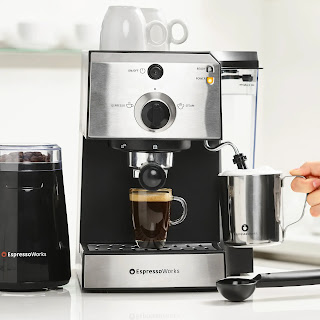The Inner Workings of Espresso Machines: A Journey Through the Perfect Shot
There's something magical about a perfectly brewed espresso, with its rich aroma and velvety crema. Behind this small but powerful cup of coffee lies a sophisticated piece of machinery - the espresso machine. In this blog, we'll take a deep dive into the inner workings of espresso machines, unraveling the science and artistry that go into crafting the perfect shot.
Before we delve into the mechanics of espresso machines, let's briefly revisit what makes espresso unique. Espresso is a concentrated coffee brewed by forcing hot water through finely-ground coffee under high pressure. It's the pressure that distinguishes espresso from other brewing methods, resulting in a small, intense shot of coffee that's the base for many beloved coffee beverages.
The Components
Water Reservoir: At the heart of every espresso machine is a water reservoir. The quality of the water is crucial, as it directly impacts the flavor of the espresso. The reservoir feeds water to the boiler, where it's heated to the optimal temperature.
Boiler: The boiler is a critical component responsible for heating water to the right temperature. There are two types of boilers: single boiler systems, where one boiler handles both brewing and steaming, and dual boiler systems, which have separate boilers for each function. Dual boilers are preferred in professional settings for better temperature control.
Pump: The pump is the powerhouse of an espresso machine, generating the pressure needed to brew espresso. Traditional espresso machines often use a piston-driven system, while modern machines utilize electric pumps for consistency and precision.
Portafilter: The portafilter is the handle-like device that holds the coffee grounds during brewing. It attaches to the machine, and when locked in place, pressurized water is forced through the coffee grounds, extracting the flavors and aromas.
Group Head: The group head is the interface between the machine and the portafilter. It's where the magic happens. Hot water is forced through the finely-ground coffee, creating the espresso shot.
The Brewing Process
Grinding: Quality espresso begins with freshly ground coffee beans. The grind size is crucial; it should be fine to ensure proper extraction during brewing. A burr grinder is often preferred for its consistency.
Tamping: Once the coffee grounds are placed in the portafilter, they must be evenly and firmly tamped down. This step ensures a smooth and consistent flow of water through the coffee.
Brewing: With the portafilter securely locked into the group head, the machine activates the pump. Hot water is forced through the tamped coffee grounds at high pressure, extracting the flavors and oils, and producing the concentrated liquid gold – espresso.
Crema: A hallmark of a well-brewed espresso is the crema – the golden layer of froth that sits atop the shot. This creamy emulsion consists of oils, gases, and colloids, signifying a harmonious extraction.
Conclusion
In the world of coffee, the espresso machine is a marvel of engineering and precision. From the water reservoir to the pump, portafilter, and group head, each component plays a vital role in creating that perfect shot of espresso. Understanding the inner workings of these machines not only enhances our appreciation for the craft but also empowers us to explore the art of espresso making at home. So, the next time you savor a well-crafted espresso, take a moment to acknowledge the intricate dance of mechanics and flavors that brought it to life.




Comments
Post a Comment